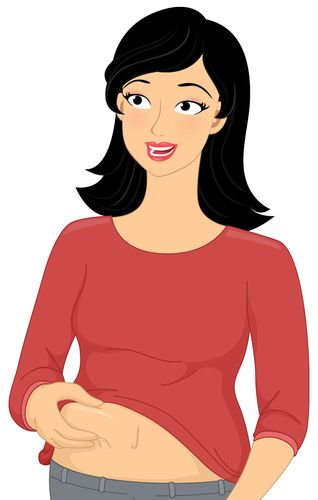SIX MONTHS after giving birth to her twins, Ramneek Gupta, 29, noticed the ‘coning’ of her tummy when she performed certain movements or tasks. She failed to register the coning during her pregnancy, and soon after the birth of her babies, she was too busy to address the issue.
Luckily, she was suffering from a not too severe form of diastasis recti (DR). It didn’t interfere with her daily functioning. But most women (more than 95 per cent worldwide) suffer from some form of DR soon after birth. The problems can range from the ‘spilling’ of a flabby mommy tummy over the waistband of a pair of jeans (despite returning to pre-pregnancy weight) to coning, incontinence, pain in the navel or back or pain while coughing.
Unfortunately, flared hips, abdominal discomfort or pain and loss of bladder control are viewed as natural after-effects of having carried and birthed a baby.
But it can also happen when a distance or gap is created between the left and right side of the rectus abdominis muscle, which occupies what is roughly referred to as the six-pack abs region.
This occurs especially during pregnancy or post delivery, among those who carry bigger or multiple babies, have had c-sections, or those who already suffer from some form of abdominal stress or damage.
An abdominal scan can confirm the presence of DR. Many tests can also be done at home with the help of videos available online. Once diagnosed, solutions range from exercises at home and guided physiotherapy to surgery. Recovery is contested, but treatment involves strengthening abdomen, pelvic floor and core area muscles.
At The Sanctum, a pioneering midwifery-led birthing centre in Hyderabad, hundreds of mothers have been treated for DR for a decade now. According to their in-house figures, a whopping 98 per cent of all mothers at their six-week postpartum check have some amount of DR. While 80 per cent of the mothers have complete closure of the rectus abdominis at the end of a six-week treatment programme, the rest have 50 per cent closure.
The good news is DR can be checked for and rectified even later in life (years after delivering your child), though recovery will depend on overall health and keeping up with an exercise regimen recommended by an expert.
Did you know?
◆ Many women will have weakness along the entire length of the rectus abdominis. While some will experience it in the upper abdominal area, many will do so in the mid-lower abdominal area.
Next issue: Burning hot or icy cold baths post delivery?


